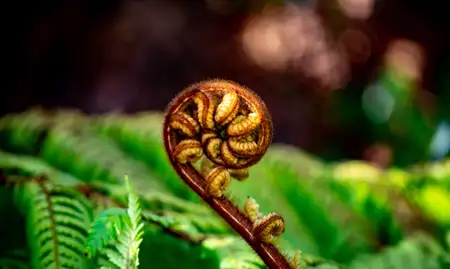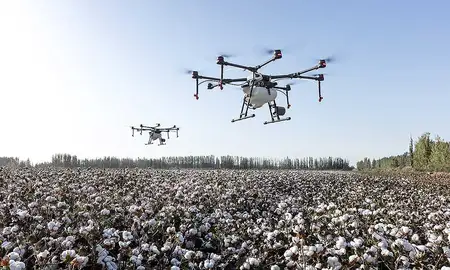
Associate Professors Gabor Kereszturi and Pauline Harris.
Associate Professor Gabor Kereszturi from the School of Agriculture and Environment and Associate Professor Pauline Harris, Rongomaiwahine, Ngāti Rakaipaaka, Ngāti Kahungunu ki Wairoa, from Te Pūtahi-a-Toi School of Māori Knowledge, have received over $74,000 each from the Ministry of Business, Innovation and Employment (MBIE) for their research projects.
The funding is from MBIE’s New Zealand United States National Aeronautics and Space Administration (NASA) Research Partnerships Catalyst Fund. The fund invites proposals for New Zealand researchers to work with NASA to undertake collaborative earth observation research in the areas of natural hazards, water and climate modelling, environmental monitoring or biodiversity.
Both Massey researchers will undertake a six-month investigative study in conjunction with a NASA partner from 1 April 2024. MBIE has funded 12 feasibility studies nationwide and will then provide an additional three years of funding for up to five of these projects based on initial findings.
The overarching goal of the fund is to build strategic relationships between New Zealand and NASA by partnering in global research initiatives that unlock information about the environment, earth systems and climate through observation of the earth from high-altitude and space.
The successful projects
Monitoring vegetation-geothermal interactions from space and airborne platforms – Associate Professor Gabor Kereszturi
Geothermal features across Aotearoa New Zealand are considered taonga, and their fire and energy a gift from Hawaiki that migrated from the depths and exploded through the land providing heat and light for the people. Geothermal waters can also act as stressors and force plants to alter their metabolism, providing an excellent opportunity for tracking environmental processes from space. This is largely underutilised due to its complexity and the lack of analytical framework.
This feasibility study¬Ýwill bring together researchers from Te Kunenga ki P≈´rehuroa æ≈÷ð”∞‘∫, Te Herenga Waka Victoria University of Wellington and NASA's Jet Propulsion Laboratory to design next-generation environmental monitoring and analytics using earth observation data.
Plants can quickly change their metabolism to respond to environmental stresses including heat, scarcity of water or nutrients, or toxicity levels. Earth observation data can capture subtle changes in plant functions that can be used to efficiently and cost-effectively monitor our geothermal resources and the ecosystems surrounding them. This study will integrate data from airborne and satellite platforms to better capture the chemical and physical changes of plant cover.
Using machine learning methods, the study will unlock the underlying interactions of plant and stress agents to formulate new satellite-based analytical solutions capable of monitoring a wide range of environments via plant cover. Utilising NASA’s fleet of satellites, researchers will design a new cost-effective and holistic monitoring tool underpinning environmental stewardship and future-looking decision making. Solutions will develop a new environmental analytical tool for responsible geothermal resource management. The underlying methods have significant wider potential applications to pollution and contaminant detection, tracking primary production and agriculture and drought and flooding impacts.
Tātai Arorangi he kaiarataki – integrating space-based observations through Maramataka – Led by Associate Professor Pauline Harris, with Professor Hemi Whaanga and Professor Rangi Mātāmua.
Māori communities grapple with the multifaceted challenges posed by environmental and climatic changes, including coastal erosion, sea-level rise, increased precipitation, temperature variations and extreme climate events. These issues directly impact community health, wellbeing and subsistence, disrupting traditional practices informed by celestial, environmental and ecological indicators that play a key role in Māori traditional calendar systems called maramataka. Anthropogenic changes, population growth, habitat destruction, pollution and socioeconomic pressures further complicate predictions and applications of these indicators within Māori practices.
This project was developed to respond to the critical need for Māori-led initiatives to access innovative data for monitoring environmental and ecological impacts. This initiative determines Māori environmental monitoring priorities, leveraging advanced data analytics and machine learning on satellite data. The goal is to process large-scale datasets, offering real-time insights for informed decision-making in Māori communities. Additionally, a capacity and capability programme is designed to empower community researchers, ensuring ongoing environmental monitoring beyond the project's conclusion.
To realise the project's potential, strategic partnerships have been formed with NASA's Indigenous Peoples Initiative, the Society for Māori Astronomy Research and Traditions (SMART) and members of the Māori Working Group in Aerospace (MWGA). NASA's team specialises in collaborating with Indigenous communities to enhance capacity through earth observations, utilising satellite data and conducting world-class research. SMART brings leading experts in Māori astronomy and maramataka who have led the revitalisation of maramataka and Matariki, while MWGA adds insights from diverse experiences in space enterprise and entrepreneurship.
This project was designed together with the late Graeme Everton, NgƒÅti Tuwharetoa, NgƒÅti Raukawa, who saw the great potential for MƒÅori in the Aerospace sector and the importance of collaboration with Indigenous peoples around the world. He was a well known collaborator to many æ≈÷ð”∞‘∫ researchers. The collaborative efforts will¬Ýdeliver a MƒÅori-centric programme enriched with knowledge, relationships, and unique approaches.
Associate Professor Pauline Harris is the Deputy Director MƒÅori and a Principal Investigator for the and the Vision MƒÅtauranga Theme Leader for the .Ã˝
More information about the successful projects is available
Related news
Three Massey projects awarded MBIE Vision Mātauranga Capability funding
Of the 16 grants funded across the motu, Massey is leading three research projects, and partnering on another.

MBIE funding awarded to researchers for innovative, cutting-edge projects
Four projects led by æ≈÷ð”∞‘∫ researchers have been awarded more than $12 million in the Ministry of Business, Innovation and Employment's (MBIE) 2021 Endeavour Fund.

Massey researchers awarded more than $13 million in MBIE funding
Three æ≈÷ð”∞‘∫ researchers have secured more than $13 million in funding, from the Ministry of Business, Innovation and Employment Endeavour Fund.
